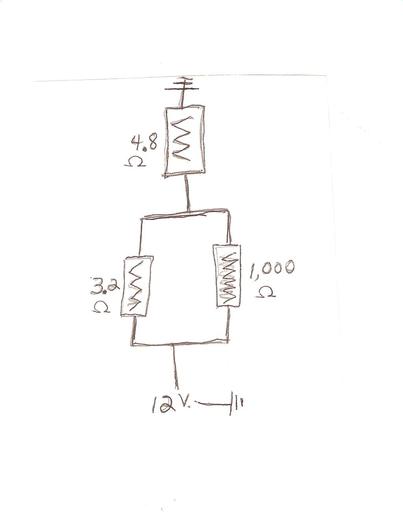I had a job interview Thursday and was tested on numerous vehicle systems and shop tools. I wanted to share this one with you.
With a 12 volt electrical supply and two resistors hooked in parrallel, one being 3.2 ohms the other 1,000 ohms then a third resistor of 4.8 ohms hooked in series with the first two what is the total resistance?
I put down the total resistance is 3.2 ohms. Because electricity will seek the path of least resistance and the resistance will be that of the lowest resistance.
Hope I was correct. I posted a drawing of the diagram.

With a 12 volt electrical supply and two resistors hooked in parrallel, one being 3.2 ohms the other 1,000 ohms then a third resistor of 4.8 ohms hooked in series with the first two what is the total resistance?
I put down the total resistance is 3.2 ohms. Because electricity will seek the path of least resistance and the resistance will be that of the lowest resistance.
Hope I was correct. I posted a drawing of the diagram.


